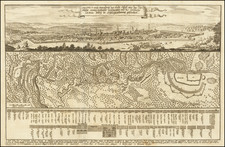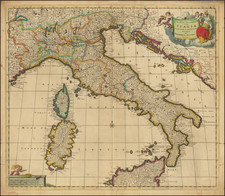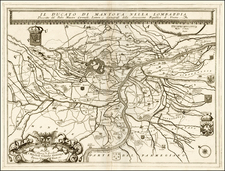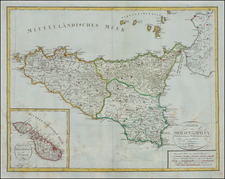Attractive example of John Speed's map of Italy, from the 1676 edition of his Prospect of the World, published posthumously by Bassett & Chiswell. Unquestionably the most beautiful and decorative map of Italy to appear in an English language atlas in the 17th Century. Includes views of Florence, Venice, Rome, Genoa, Naples and Verona across the top and side panels featuring the typical dress of the various staions of Italian society. The text on the verso gives a 17th Century English view of Italy. John Speed's maps are without question the most decorative and highly sought after maps produced in England. This example includes nice full margins, which is unusual for Speed's maps. A wonderful little note on the verso of the map states Modern Color R. Casswell. Goodspeed's Bookshop May 23, 1926. Archivally conserved with Japan paper on the verso, but not affecting the readability of the English text on the verso, which remains strong and dark. A nice example, with a wonderful Goodspeed's Association, from a time period pre-dating all of the venerable American antique map sellers.
John Speed (1551 or '52 - 28 July 1629) was the best known English mapmaker of the Stuart period. Speed came to mapmaking late in life, producing his first maps in the 1590s and entering the trade in earnest when he was almost 60 years old.
John Speed's fame, which continues to this day, lies with two atlases, The Theatre of the Empire of Great Britaine (first published 1612), and the Prospect of the Most Famous Parts of the World (1627). While The Theatre ... started as solely a county atlas, it grew into an impressive world atlas with the inclusion of the Prospect in 1627. The plates for the atlas passed through many hands in the 17th century, and the book finally reached its apotheosis in 1676 when it was published by Thomas Bassett and Richard Chiswell, with a number of important maps added for the first time.











![Europae Tabula VII [Sicily, Malta, Sardinia]](https://storage.googleapis.com/raremaps/img/small/89779.jpg)


